
DAY 2
(Reading time: 5 minutes)
Seoul can still be very hot and humid even in mid-September; temperatures hover around 30°C, and it feels like being inside a well-run laundry. It’s easy to understand their love for icy air conditioning.
Today marked the end of Chuseok, one of the two most important Korean holidays, which for us as tourists and non-Koreans meant free entry to Seoul’s five palaces. Don’t be fooled; visiting Korean palaces isn’t like touring European chateaus, where you’re mostly indoors. Here, you’re mainly outdoors, exposed to all weather conditions. But the plan was set, so we went for it…
..and I was ready to change my T-shirt five minutes after leaving the hotel…
…but not Mark. The man is like an elephant—without sweat glands.
Seoul takes pride in its five royal palaces:
Changdeokgung – said to be the most beautiful, especially due to its Secret Garden
Changgyeonggung – built by King Sejong the Great for his father
Gyeongbokgung – built first, it’s the largest and most visited
Deoksugung – originally built as a prince’s residence
Gyeonghuigung – a subsidiary royal palace
(“gung” at the end of each name means “palace”; in Latin letters, the palace names look devilish, but in Korean, they’re not that difficult—try getting a Korean to pronounce Choustníkovo Hradiště, Kardašova Řečice or even Pražský hrad… see what I mean?)
All five palaces are within walking distance of each other, but I wouldn’t recommend making a one-day marathon out of it; everything will blur together in your mind. If you want my honest opinion, it all blends together for me too; the buildings and their surroundings are very similar. If you only have one day, visit Gyeongbokgung. We did that years ago, and this time, we decided to broaden our horizons and give Changdeokgung and Changgyeonggung a chance.
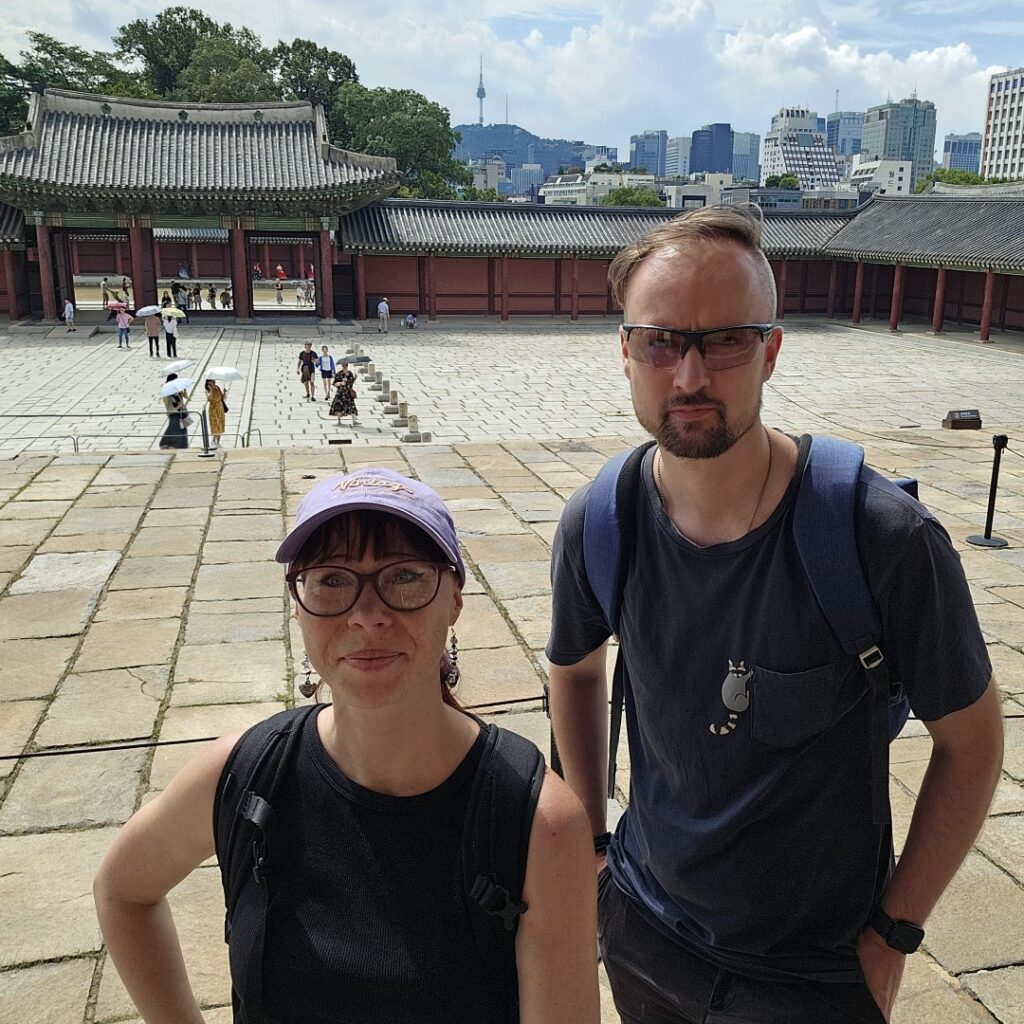
Most of the palaces were severely damaged by the Japanese during the occupation and later by North Koreans during the Korean War. Even today, they are still undergoing restoration. Visitors can walk around the vast grounds surrounding the buildings but not inside, where there’s almost nothing to see anyway. However, this doesn’t mean they aren’t beautiful or that visiting them is a waste of time.
Changdeokgung (see the opening photo) feels less geometric and orderly compared to the largest Gyeongbokgung. It was built in harmony with nature and its naturally hilly terrain. A favorite palace of the Joseon dynasty kings, it boasts a lovely garden with a pond, but entry to the garden requires an extra fee.
Changgyeonggung is literally right next to Changdeokgung, with a seamless transition between the two. The palace buildings were completely destroyed by the Japanese at the start of the 20th century, and the grounds were repurposed for a zoo, botanical garden, and museum—all, of course, in the “Japanese style.” The restoration of the original palace began in the 1980s.
I’ve always enjoyed spotting and counting the japsang figures on the traditional roofs of Korean palace buildings. These guardians must be installed in odd numbers, ranging from 3 to 11. The more, the better. The figurines usually resemble various sacred animals—dragons, monkeys, lions, phoenixes… although their forms are somewhat comically simplified. Placed in a row on the roofs’ edges, they protect against misfortune, evil spirits, and fires.

During the two biggest Korean holidays, Chuseok and Seollal, entry to all palaces is free. You also won’t pay anything if you arrive dressed in a traditional Korean hanbok—though that does mean you’ve spent something on renting it (unless you already own one). Either way, the city recoups its money and that´s good.

However, the price of visiting the palaces isn’t much; individual tickets range from 1,000 to 3,000 won (the Secret Garden is 5,000 won), and you can save a bit with a combined ticket.
After visiting one or more palaces, it’s common to head over to the nearby Bukchon Hanok Village. We wouldn’t go there again, as it felt like a tourist trap. This residential area, perched on a small hill, is famous for its narrow streets lined with villas in the traditional Korean style. In reality, it’s more like houses surrounded by walls and fences with “Please keep quiet, people live here” signs. The biggest crowd is, of course, in the streets that you see in internet photos—charming, empty, with Namsan Tower in the distance.
Specifically, it’s this view:
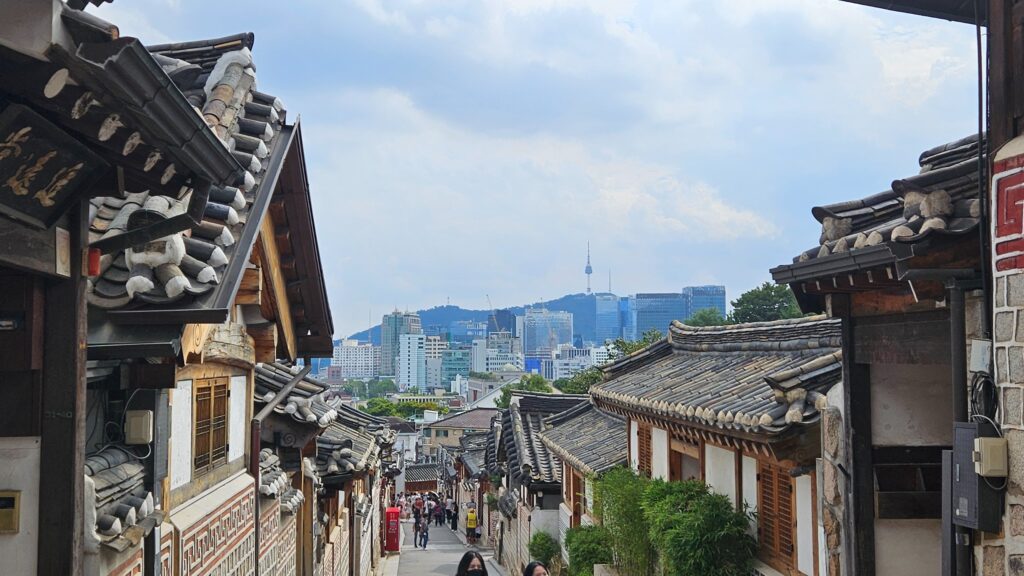
Not so great, right? Forget about that “empty” street. But if you’re not after that one Instagram-perfect shot, wander through other parts of the area, and you might find a similarly satisfying view without the crowds.

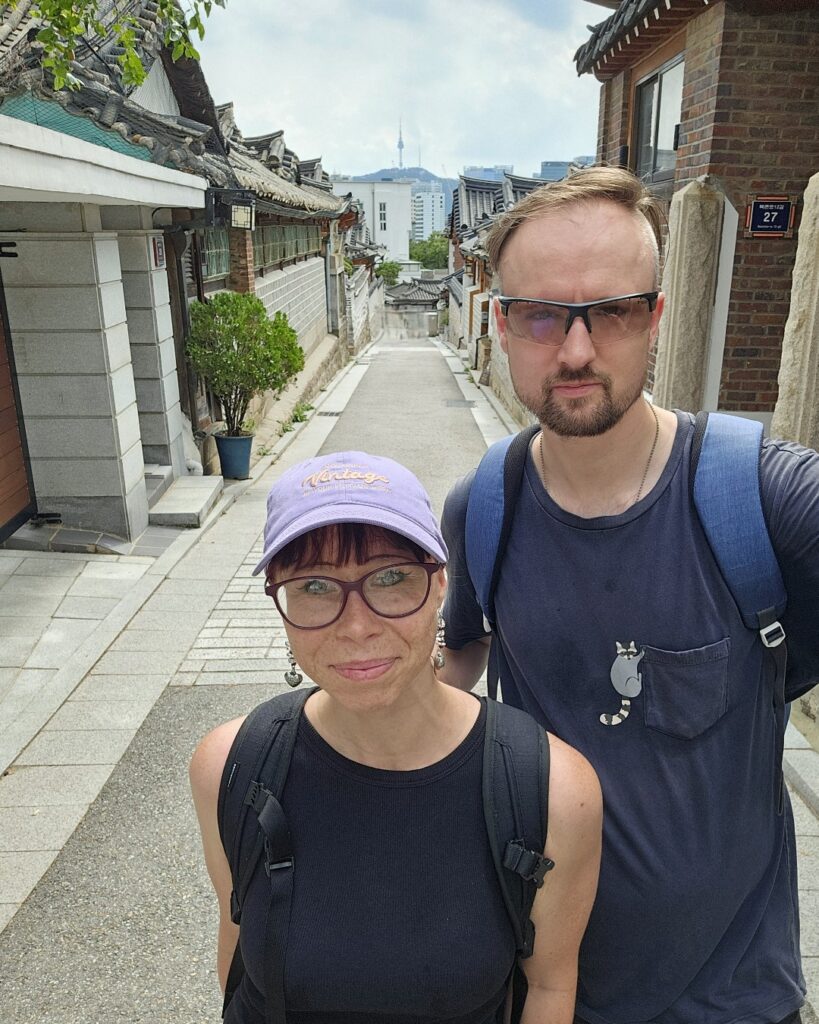
(the photo is taken in the yellow area on the map; most people go for photos to the pink one)
Our late lunch was all about traditional Korean barbecue… except without the traditional “grill it yourself” experience! The restaurant owners had other ideas, so we watched as grandma and grandpa cut and cooked all the meat on the grill for us. And not just for us, but for all the customers—Koreans and foreigners alike. It’s nice of them to take care of us, but where’s the fun? We want to do the cutting and grilling ourselves; that’s why we go for Korean barbecue!
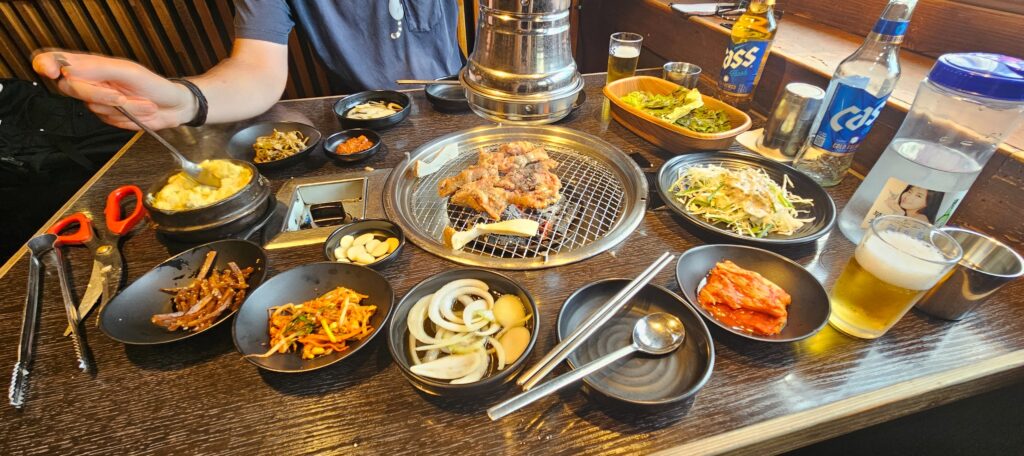
In the evening, we headed over to check out Gwanghwamun Square and its two main stars—King Sejong the Great, who created the Korean alphabet, and Admiral Yi Sun-shin, the “father” of the turtle ships (a special type of armored warship).

Gwanghwamun is always bustling with activity, and this time, it was an outdoor reading festival…
…and not far away, there was a swinging wrecking ball. Someone thought it would be peak creativity (or maybe peak recycling?) to use a hollow wrecking ball as a giant Kinder Surprise, with a person emerging in a different costume every few minutes to perform a bit of acrobatics to dramatic music. While we rolled our eyes, others were absolutely mesmerized by the colorful ball. Long live modern art!
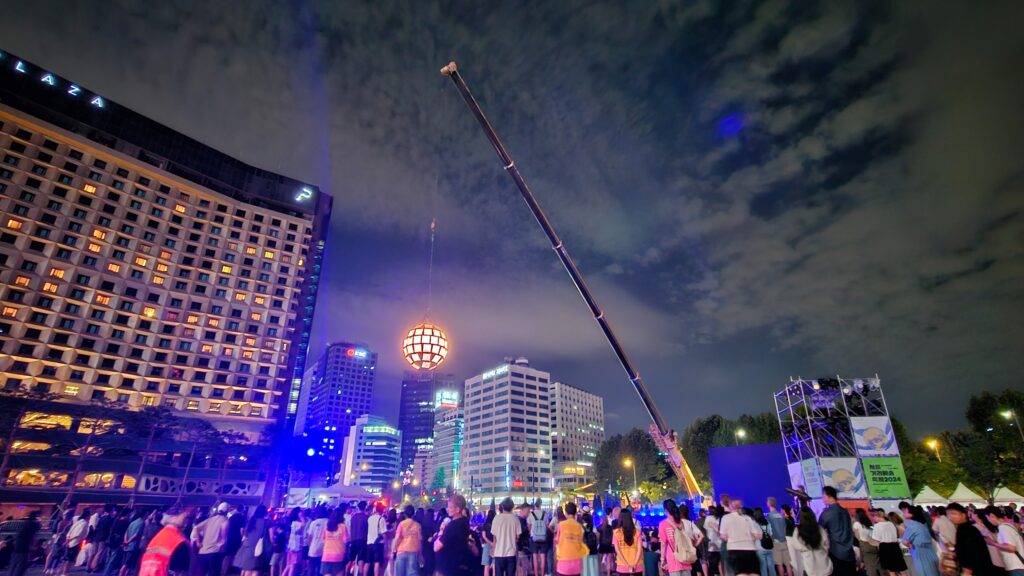
-endy-
DONKEY´S SPECIAL:
-mj-